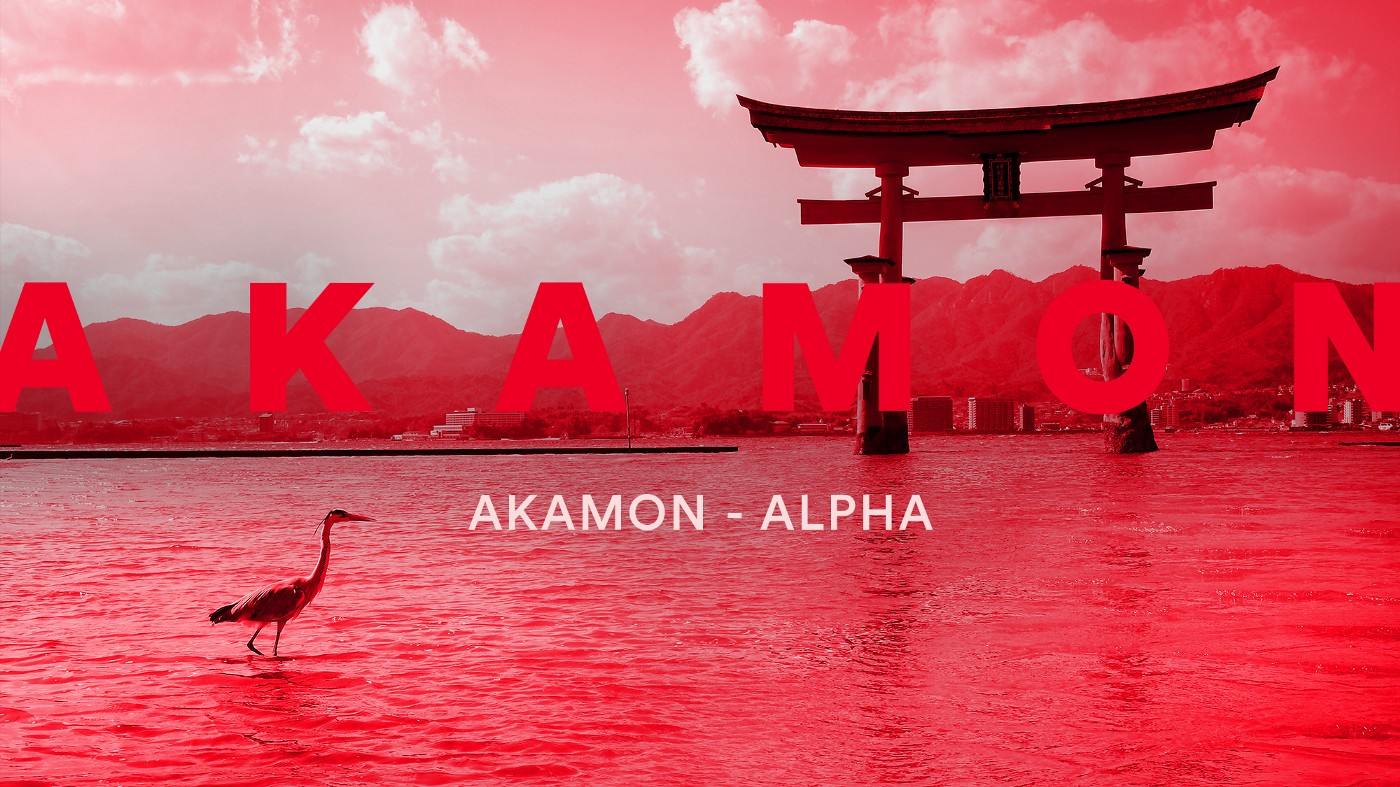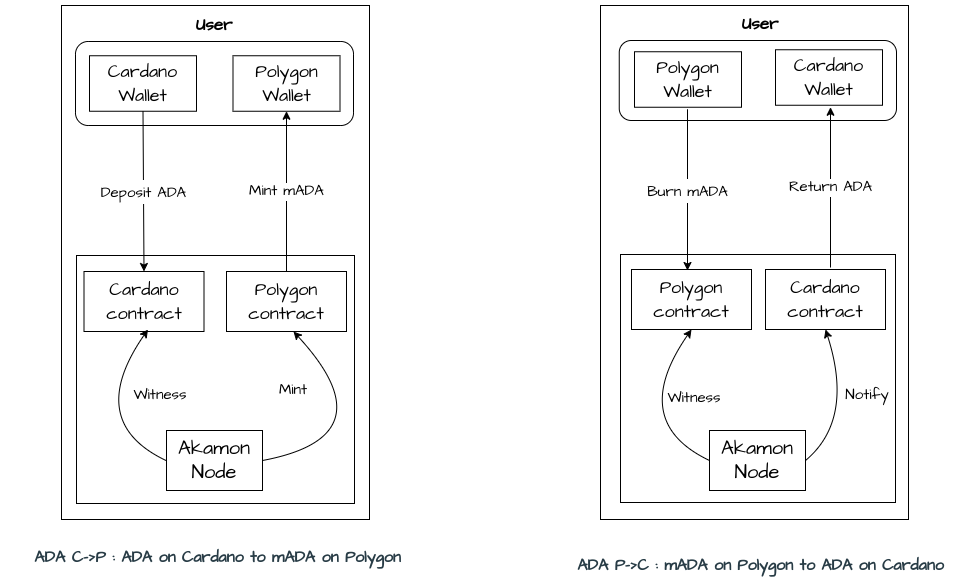Technical Report 2022/05/15
Welcome to the MELD May 2022 technical report for the progress of the last 30 days!
The main focus has been completing the first version of Akamon Alpha, integrating it with MELDapp, and being ready for a public release.
Akamon
Alpha

Akamon α is the first design iteration among the many we develop. We design the bridge iteratively to focus on a new fundamental concept with each iteration. α focuses on setting up the foundation for the later versions. We also aim to collect UX, infrastructure, and operations experience through it to have more space for decentralization designs in the later iterations. β expects to semi-decentralize the bridge, γ promises to bring more networks to the table, with δ seeks a fuller decentralization design.
The foundation for all iterations is to wrap assets between the chains. For example, an ADA round trip can be seen below.

Users first send ADA or mMATIC to an on-chain script to initiate a request. Sending ADA is to mint mADA on Polygon. Sending mMATIC is to burn them on Cardano to get back MATIC on Polygon. Confirmation then happens when validators sign to confirm the request. Once enough signatures are gathered, the users receive tokens on the bridge’s other end. The confirmation process should evolve with each iteration, from centralized (one signature) to fully decentralized (community nodes).
The bridge nodes should also stake locked tokens to generate additional revenues. This incentivization is key to node operators and users, implying that the more traffic there is, the lower transaction fees.
Due to the iterative nature of the process, it is also essential to build migration frameworks to transition from one iteration to another seamlessly. This process includes both data and assets migration, which is not trivial to do right.
Public Testnet Launch!
We tested the finalized mADA and mMATIC tokens and their integration in MELDapp on the Cardano public testnet and Polygon Mumbai for over two weeks. While there are still many improvements to be made, we have decided it is time to release the bridge to the public. A testnet deployment avoids most risks for the people involved while bringing valuable UX, infrastructure, operations, and community management experience and feedback.
We are finalizing the deployment and marketing details to perform the public testnet launch on May 16th 2022!
Beta
We do not intend to release the centralized α to the mainnet. We have been designing a more distributed and decentralized β in parallel. The main goal of an α testnet launch is to collect UX, infrastructure, operations, and community management experiences to have more focus space for decentralization later on.
User needs and how they interact with the bridge should stay the same regardless of its underlying architecture. One should not sacrifice UX to be a little bit more decentralized if that is quantifiable in the first place.
We have been writing the β paper with actual technical discussions on the economics model, governance model, and contract designs leading towards decentralization. The paper will be released at the end of May. A β testnet launch with more bridge partners will follow suit on June 5th 2022.
Upcoming Products

We continue to design the upcoming products to meet our aggressive roadmap. These include protocol fees (from Akamon revenues), MELD token utility, variable staking, governance, migration, and lending. Everything leading to governance will be demonstrated in a dedicated white paper at the end of July. Lending is trickier as we want to develop a sustainable yet innovative model to compete with the existing ones on all chains. We will publish the first dedicated white paper for lending at the end of August.
We have been targeting Cardano’s upcoming Vasil hard fork that brings many improvements to smart contract designs for these upcoming products. We have been slowly but surely working on many Plutus V2 tooling in anticipation. Once Akamon is more stable, we would put more effort into these works and hopefully open-source more tools to the ecosystem.
With Akamon in hand, we have also been studying more ecosystems outside of Cardano. For instance, we consider adding Avalanche and Nervo’s support to later versions of Akamon. Together with our Polygon works thus far, these efforts bring interoperability options and experience to make MELD products cross chains.
Finally, as we push these products closer to mainnet, we will start publishing security tooling and analysis. Both MELD and Hachi have been moving closer to a product-driven direction from a more research-driven one. The key is defining user-driven products and then researching and developing them.
Conclusion
We cannot wait to release Akamon Alpha to the public, engage users and gather tons of experience from it. We then look forward to the upcoming monthly launches of the white papers and products. It is an exciting time to build!